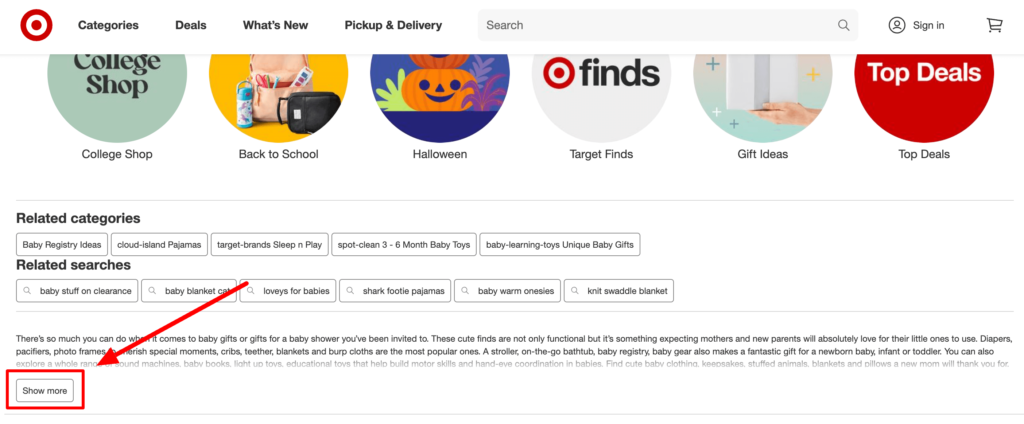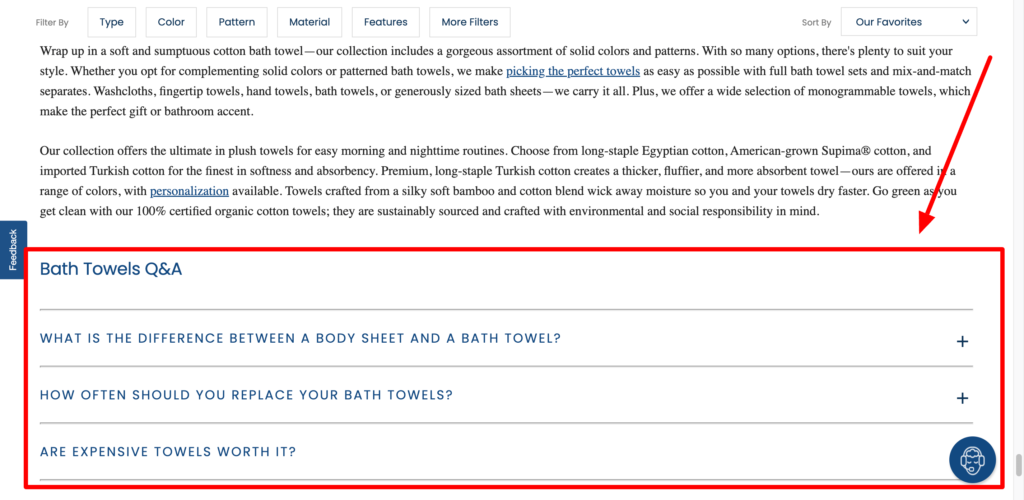When content and search engine optimization (SEO) converge, they can give you a big advantage…

August 20, 2022 | Mindy Weinstein | SEO |
Ecommerce SEO Best Practices to Direct Your SEO Strategies
If you know that your business’s ecommerce SEO strategy is important but aren’t sure how to put it into action, this guide is for you. You may wonder if you should focus on link building or your website’s organic, on-page optimization. Understanding which activity to focus on can help you build a solid SEO that will have the best chance of providing you with the results you are looking for.
While backlinks are important when it comes to your company’s position on search engine results pages, they are only one part of SEO for ecommerce as a whole. You must have well-optimized content present for search engines to rank your website in the first place. As a result, you need to enhance your on-page SEO before focusing on other steps in the optimization process, such as securing backlinks.
How can you know how to optimize your website pages for ecommerce SEO? The following on-page SEO checklist is a great starting point to building an ecommerce website that performs as you want it to on search engines.
On-Page SEO Strategy Steps to Take
If you want to improve your Ecommerce site’s results in Google searches, improving your Ecommerce SEO is vital. If you are new to page optimization or need a refresher on how to improve your content organically, the following Ecommerce SEO tips should help.
1. Define Themes and Keywords
The first thing that you need to do is research and define keywords for your website. If you have already done so, you are ahead of the game. Create a list of keywords that is organized from broadest term to narrowest term, keeping in mind that you want to ensure that any target keyword on your list is relevant to your company’s products and categories, even if it is on the broader side.
How can you find such keywords? Start by brainstorming phrases that relate to your business and that you believe your target audience is searching for online. From there, you can expand your list using keyword research tools. Examples include SE ranking and Semrush. Answer The People can also help you find keywords and related topics for your website content or blog articles.
Once you are confident that your list is complete, you can rank the keywords by priority levels. You could use three categories: Priority 1, Priority 2, and Priority 3.
The keywords should then be assigned to specific pages on your site. This process, known as keyword mapping, helps you avoid keyword cannibalization, which means too many keywords are shared between pages, diluting their usefulness where SEO is concerned. It is normal to have around 2 or 3 primary keywords per page with several secondary keywords in addition to those.
Once your keywords are in order, you can start the page optimization process. You can learn more about keyword research in this helpful guide.
2. Optimize Your Website Pages
What should you look at when it comes to your on-page Ecommerce SEO strategy? Focus on heading tags (with special attention paid to H1s, which are your main headers at the top of the page), title tags, image alternative text, and your main body text. Meta description text doesn’t greatly affect ranking, but it should still be optimized. It is also useful for online searchers who want to find out what a page is about before clicking on it.
If you need more help with on-page optimization, read this guide. You can also use Google Search Console’s Performance Report to find out if Google recognizes your pages under related search queries.
If GSC shows some promising keywords, consider focusing on them for their related pages. The page title and H1 header are good places to include these terms. You can also weave them in naturally throughout your body text, but each page should read naturally and avoid keyword stuffing. This may be one of the most important SEO tips for ecommerce website optimization, as it takes both user experience and search engine result rankings into consideration at the same time. A poorly designed website or one that is difficult for the user to read won’t help you gain favor with potential customers.
3. Include Relevant Content
Now that your website is optimized on a keyword level, it is time to look at your content. Optimized content is important for any website, and any SEO for an ecommerce website strategy should include it.
Since category pages are a common feature on ecommerce sites, let’s look at the type of content these pages should include.
Category pages are a great place to add text content to your website. However, many companies believe these pages should be “less-wordy,” worried that body content will distract shoppers from their online shopping experience.
In reality, adding optimized text without intruding on user experience is fairly easy. The Target website is one good example. Look at this screenshot from Target’s Baby Gifts category:

As you can see, there is optimized text on the bottom of the page with a “Show More” expansion button. This places the optimized text on the page without interrupting the buyer experience. It also allows users to control how much text they see on the page.
Another good example comes from TheCompanyStore.com. This site displays category content that includes FAQs that the buyer may benefit from:

Both examples allow the user to see what they want and control the content-based experience on the page. At the same time, the website benefits from the optimized content as far as SEO is concerned.
This is a good time to remind you that the user experience, also known as UX, is one of the most important aspects of any website. While good content is important to UX, so is your website’s overall design and usability. Take a look at your site through the eyes of a consumer to see if it is truly meeting their needs and is easy to use. Things like broken links and slow site speed are likely to turn a potential customer away. In the end, this will make your SEO efforts somewhat pointless; strict quality control is vital at every step of your digital marketing and SEO strategy.
4. Stay Up to Date With Your Website’s SEO
SEO for Ecommerce is not something that is done for good once your website is optimized. You should always be looking out for ways to improve your website. The world of digital marketing and technology is always changing, as is the world of Ecommerce. These facts require you to be an ongoing learner when keeping up with the competition as with your own digital marketing efforts.
Whether staying updated means discovering a better long tail keyword, looking out for duplicate content on your site, or creating a new blog post content strategy, always keep an eye on your website and the ever-changing digital marketing landscape. This will help you ensure that you stay ahead of the competition and optimize your site in the best way possible.
Remember that Google Search Console and other SEO-related tools can help you monitor the performance of your pages and make adjustments when necessary. Monitoring things such as your site’s conversion rate statistics, site speed, broken links, or search volume information can help you stay at the top of your game where your SEO strategy is concerned.
Conclusion
While it is important to understand the ins and outs of your website and its relation to your overall Ecommerce SEO strategy, it can be overwhelming to handle it all on your own. You may not have the time, resources, or specially skilled team members needed to pull off a full-scale digital marketing strategy that allows you to do everything you want to with your website. You might not even know where to begin on your own.
If you feel overwhelmed, Market MindShift can help. Our marketing team is ready to assist you with your digital efforts, whether you are just getting started or need help enhancing your existing digital marketing strategy. Get in touch with us at (480) 750-2252 or visit us online to get started.